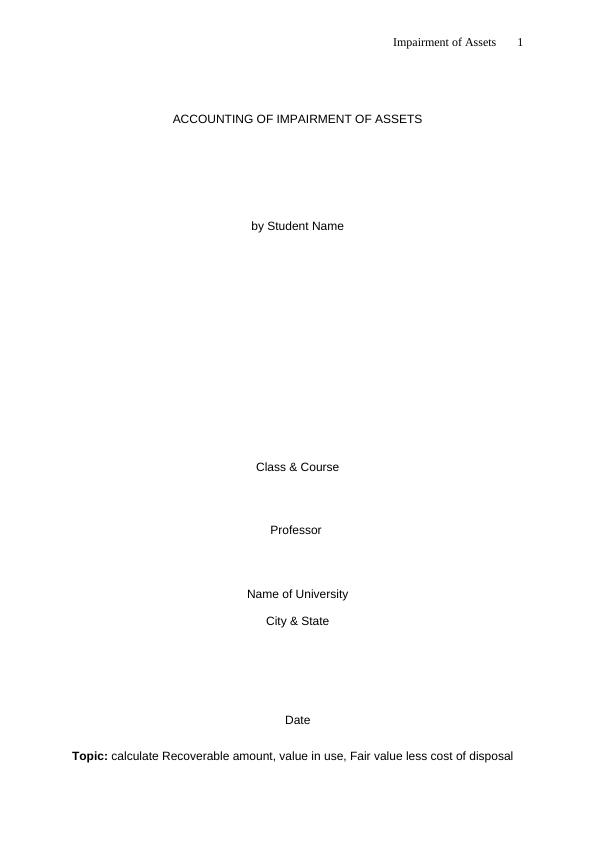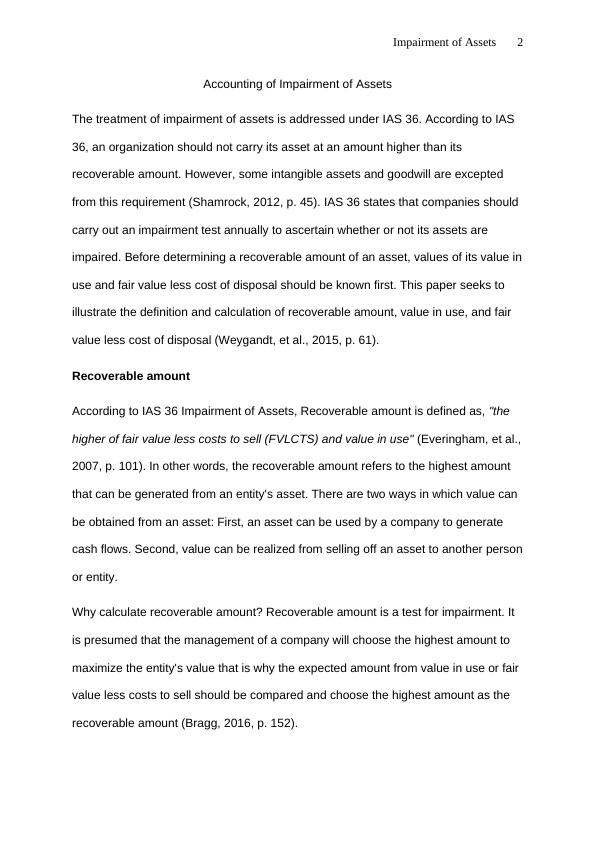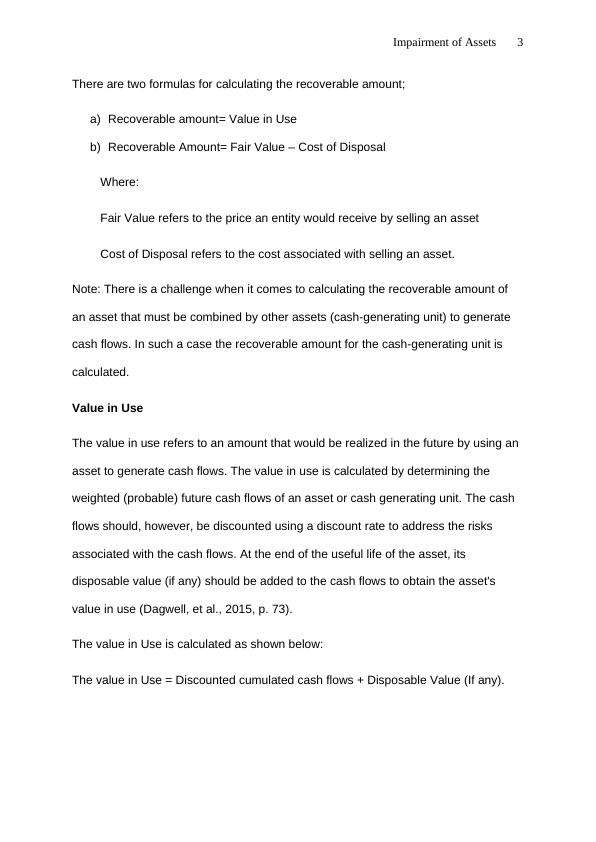Impairment of Assets: Calculation of Recoverable Amount, Value in Use, Fair Value less Cost of Disposal
6 Pages1435 Words409 Views
Added on 2023-06-04
About This Document
This article explains the accounting of impairment of assets and how to calculate recoverable amount, value in use, and fair value less cost of disposal. It defines each term and provides formulas for their calculation. An example is also given to illustrate the process. The article is relevant for accounting students and professionals.
Impairment of Assets: Calculation of Recoverable Amount, Value in Use, Fair Value less Cost of Disposal
Added on 2023-06-04
ShareRelated Documents
End of preview
Want to access all the pages? Upload your documents or become a member.
Analysis of Amount Recoverable under IAS 36/ AASB 136
|6
|1412
|426
Fair Value: Definition, Calculation, and Importance in Corporate Accounting and Reporting
|5
|1424
|416
IAS 36 — Impairment of Assets PDF
|4
|1301
|145
IAS 36 Impairment of Assets: Principles, Factors and Calculation
|7
|1239
|96
How to Calculate Recoverable Amount, Value in Use and Fair Value Less Cost of Disposal
|5
|1318
|228
Accounting of Impairment loss
|9
|1628
|36



